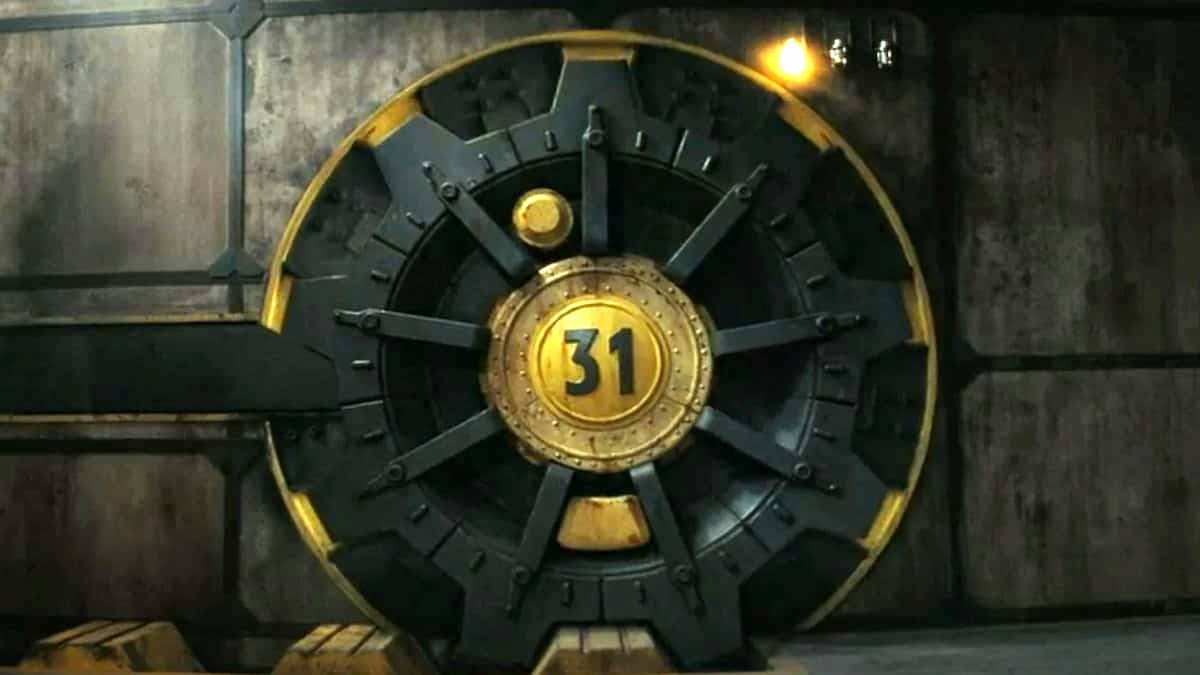
Image source: Amazon
Amazon’s adaptation of the beloved video game series Fallout by Bethesda has completed its first season, and it certainly did not disappoint. Spearheaded by Jonathan Nolan and Lisa Joy, the minds behind Westworld, the series diverges from direct game storylines to carve its own niche in the Fallout universe, yet sprinkles enough references to delight the avid fans. Here’s a deep dive into the story and ending, and the mystery of Fallout Vault 31.
The Secret of Vault 31 in Fallout, Explained
Fallout introduces us to a post-apocalyptic America, 219 years after the nuclear war of 2077. The series centers around Lucy MacLean, portrayed by Ella Purnell, who is compelled to leave the confines of Vault 33 to find her father, Hank, played by Kyle MacLachlan. As the narrative unfolds, viewers learn that the vaults were more than mere survival shelters; they were experimental setups by Vault-Tec, the series’ dystopian corporation.
Vault 31, in particular, turns out to be the linchpin in a dark corporate strategy. It housed cryogenically frozen Vault-Tec employees from 2077, poised to resume control after the war. Vault 32 and Vault 33, where Lucy was raised, served as breeding grounds to supply Vault 31 with genetically desirable offspring, unwittingly nurturing a future corporate elite.
Factions at War and the Quest for Power
The plot thickens as various factions vie for power in the wasteland. Lucy’s journey intertwines with the Brotherhood of Steel, the New California Republic (NCR), led by raider-turned-leader Moldaver (Sarita Choudhury), and a mysterious ghoul named Cooper Howard (Walton Goggins), all linked by a pursuit for a revolutionary cold fusion reactor. This device, capable of endless energy, was initially developed by Moldaver, then acquired and shelved by Vault-Tec to sustain conflict over dwindling resources.
Betrayals and the True Face of Vault-Tec
Throughout the season, Lucy confronts the grim realities of Vault-Tec’s machinations. Flashbacks reveal the corporation’s direct involvement in triggering the nuclear war to preserve the relevance of their vaults. The company’s ethos, driven by corporate greed, is epitomized by the destruction of Shady Sands—a sanctuary city Lucy’s mother once escaped to with her children—obliterated by Hank to protect Vault-Tec’s interests.
What Will Happen in Season 2?
In the season’s climax at Moldaver’s base, a dramatic showdown unfolds. Lucy grapples with the betrayal of her father, who’s now an embodiment of Vault-Tec’s corruption. Despite the familial strife, Hank manages to escape in a stolen power armor, hinting at his possible refuge in New Vegas, setting a promising stage for season two.
New Vegas, recognized from the 2010 game Fallout: New Vegas, is teased as the next arena of conflict. The finale briefly introduces Mr. House, a character from the game known for his cunning and resourcefulness, suggesting his influential role in the forthcoming season.
The series finale leaves viewers on a precipice, with key characters scattered and allegiances shattered. Lucy’s departure with The Ghoul, seeking truths in New Vegas, along with the Brotherhood of Steel’s newfound power through the cold fusion device, hint at a complex battle ahead. The first season of Fallout not only delivers a compelling narrative enriched with deep lore and character development but also sets a high benchmark for future video game adaptations.
As we await the official announcement for season two, the intricate web of corporate deceit, personal betrayals, and the relentless quest for power promises to unfold further, deepening the enthralling saga of survival and domination in the post-apocalyptic wasteland.







